Part of a series of articles titled Volcano Types.
Previous: Resurgent Calderas
Next: Nonexplosive Calderas
Article
Ash-flow tuffs (ignimbrites) erupted during caldera-forming eruptions or parts of caldera walls are present in several national park areas. These rocks are testaments to some of the largest volcanic eruptions in the history of North America. The eruptions of these calderas probably ranged from Volcanic Explosivity Index (VEI) 6 to 8 (Colossal to Apocalyptic), producing eruptive columns which extended tens of miles (kms) into the stratosphere.
Calderas are collapse structures that form during especially large eruptions that partially drain shallow magma reservoirs causing the land surface over them to subside. Caldera-forming eruptions also emit pyroclastic flows that can travel tens of miles (kms) from the vents. The presence of thick ash-flow tuffs (ignimbrites) and the presence of megabreccias formed during collapse are two of the main testaments to these violent eruptions in the geologic past.
Later volcanic eruptions (including the formation of younger calderas), faulting, erosion, and other volcanic processes can obscure or remove much of the structural evidence for older caldera complexes.
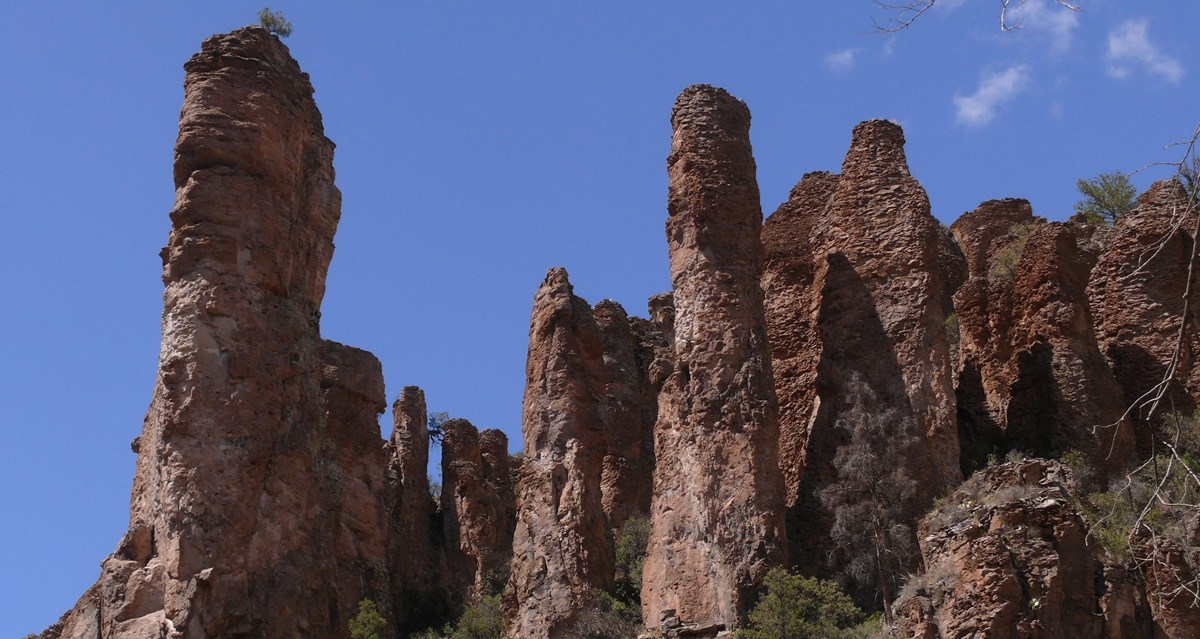
NPS photo.
At least five national parks are in or close to older caldera complexes or contain ash-flow tuffs erupted in caldera-forming eruptions, including:
The Pine Mountain Caldera in the Chisos Mountains erupted about 32 million years ago. The caldera has a diameter of about 4 miles (6.4 km). This caldera collapsed, or down-sagged without surface faulting. There is an apparent lack of ring faults. The Pine Canyon rhyolite is an ash-flow tuff that was erupted during the initial phase of caldera subsidence and is only found within the caldera boundary.
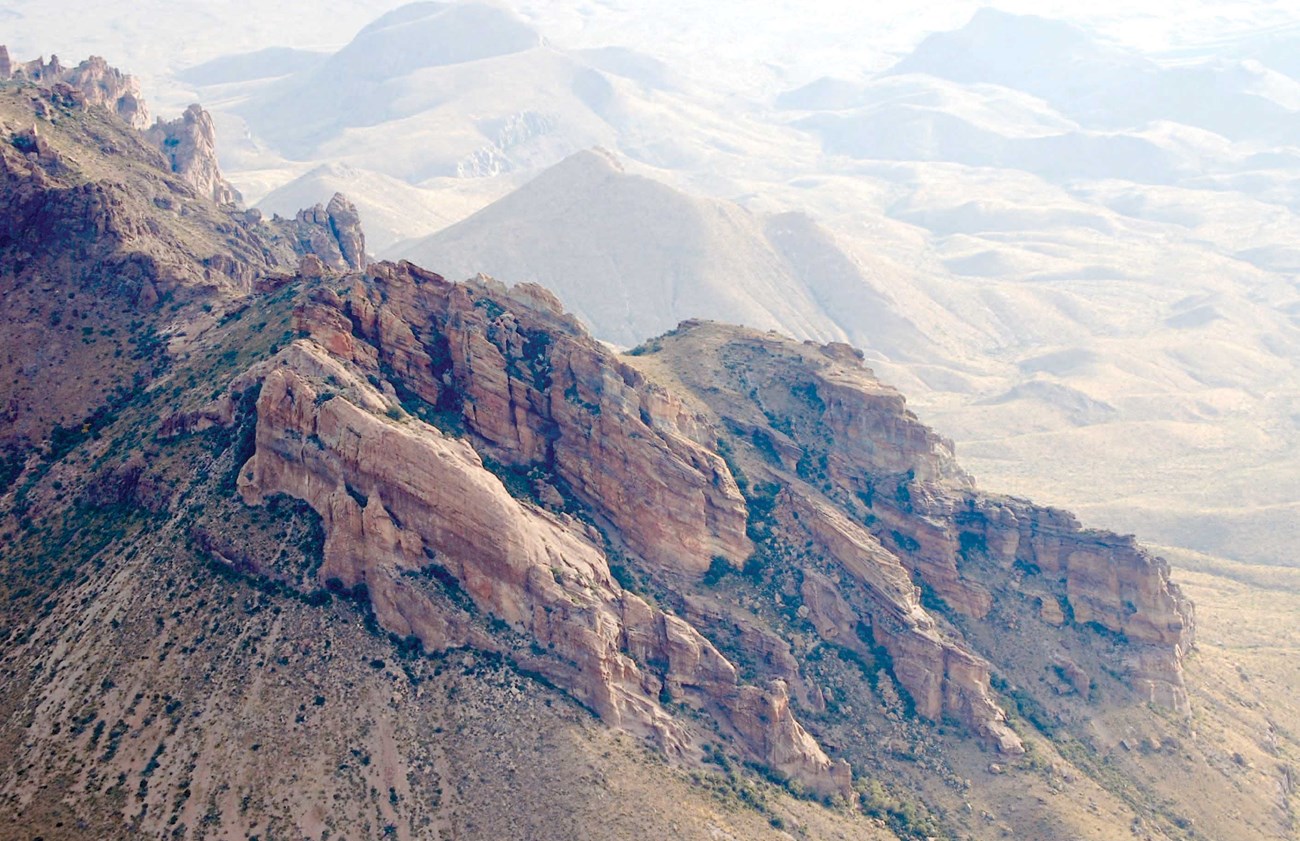
NPS photo by Don Corrick.
The hoodoos and rock spires that are the defining feature of Chiricahua National Monument’s “Wonderland of Rocks” are eroded from an ash-flow tuff erupted from the Turkey Creek Caldera about 26.5 million years ago. The Turkey Creek Caldera has a diameter of approximately 12 mi (19 km) and is located south of Chiricahua NM. The eruption had a volume of 120 cubic mi (500 cubic km).
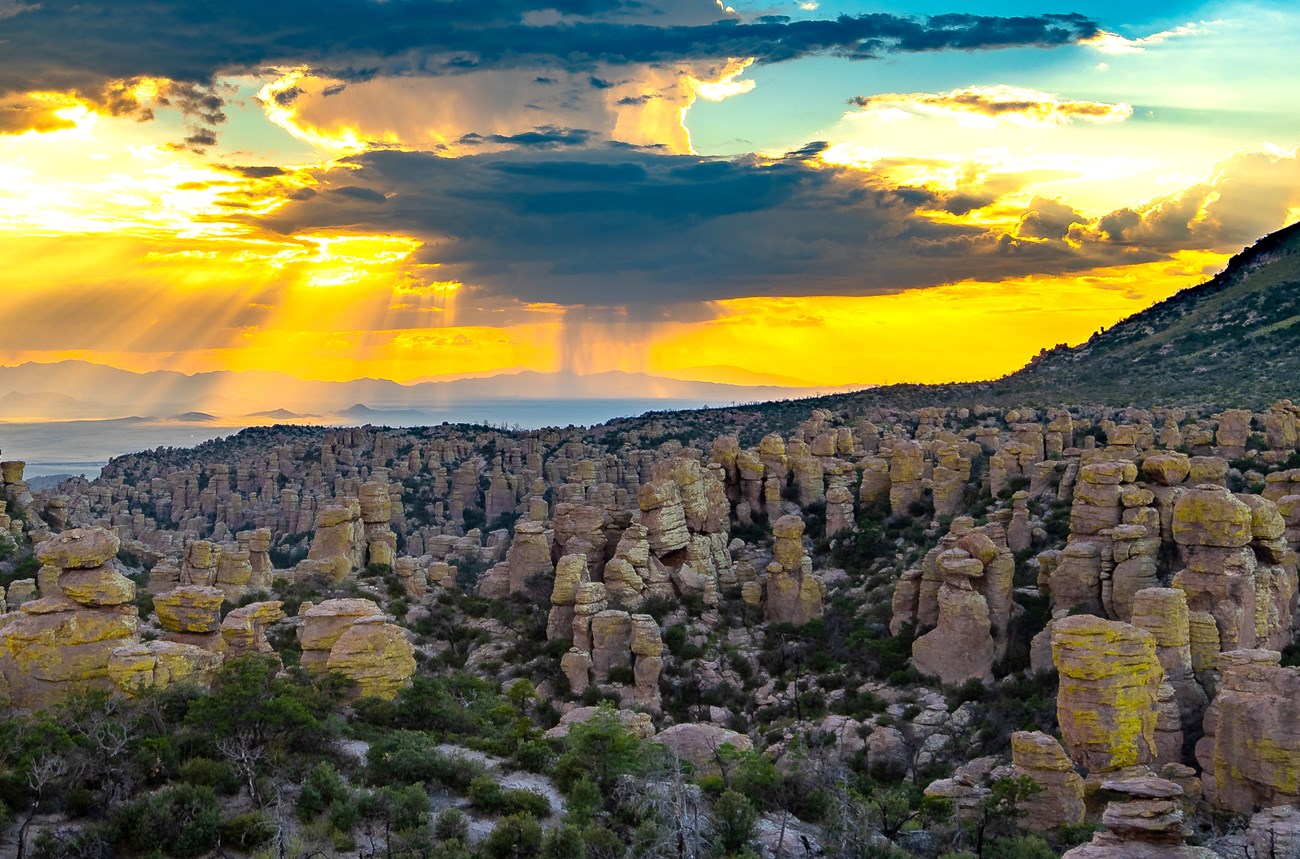
NPS photo by R. Stewart.
Coronado National Memorial is located within the walls of the Montezuma Caldera. The caldera formed during the late Jurassic and is substantially eroded, but its diameter was probably 10-11 miles (16-18 km). Volcanic deposits from this caldera system include ash-flow tuffs (ignimbrites) and a volcanic megabreccia formed during collapse.

NPS photo by D. Bly.
Gila Cliff Dwellings National Monument sits in the Mogollon–Datil volcanic field that was active between approximately 40 and 5 million years ago. Two large calderas, the Bursum and the Gila Cliff Dwellings calderas, erupted about 28 million years ago.
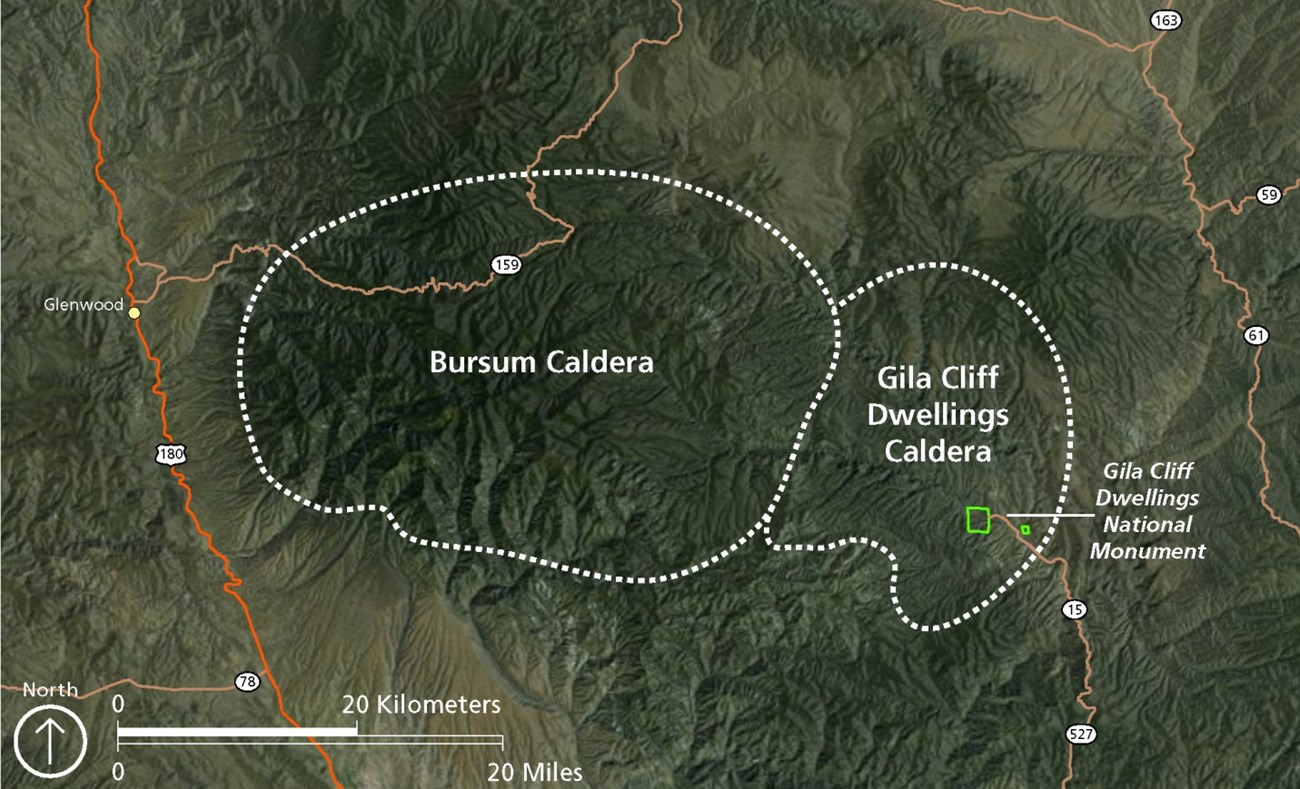
NPS image by Rebecca Port (NPS Geologic Resources Division) using ESRI World Imagery basemap.
The Tucson Mountain Caldera erupted 70 to 75 million years. The caldera was 12 to 15 miles in diameter (20 to 25 km). This caldera has been deeply eroded since the eruption, but the ash-flow tuff erupted during caldera collapse, the megabreccia formed during collapse of caldera walls, and post-caldera lava flows are exposed in the park.
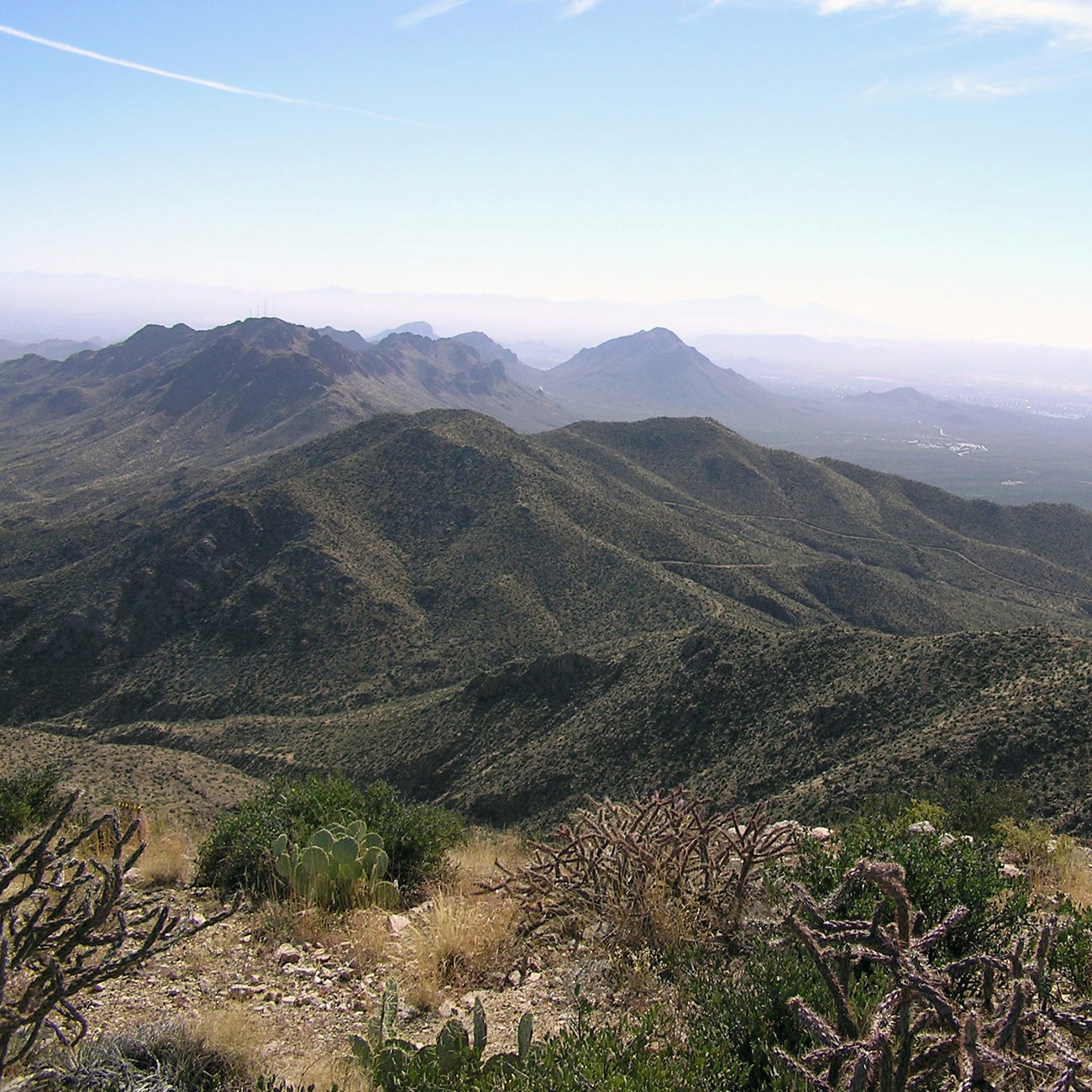
NPS photo.
Big Bend National Park (BIBE), Texas—[BIBE Geodiversity Atlas] [BIBE Park Home] [BIBE npshistory.com]
Chiricahua National Monument (CHIR), Arizona—[CHIR Geodiversity Atlas] [CHIR Park Home] [CHIR npshistory.com]
Coronado National Monument (CORO), Arizona—[CORO Geodiversity Atlas] [CORO Park Home] [CORO npshistory.com]
Gila Cliff Dwellings National Monument (GICL), New Mexico—[GICL Geodiversity Atlas] [GICL Park Home] [GICL npshistory.com]
Saguaro National Park (SAGU), Arizona—[SAGU Geodiversity Atlas] [SAGU Park Home] [SAGU npshistory.com]
Part of a series of articles titled Volcano Types.
Previous: Resurgent Calderas
Next: Nonexplosive Calderas
Last updated: April 17, 2023